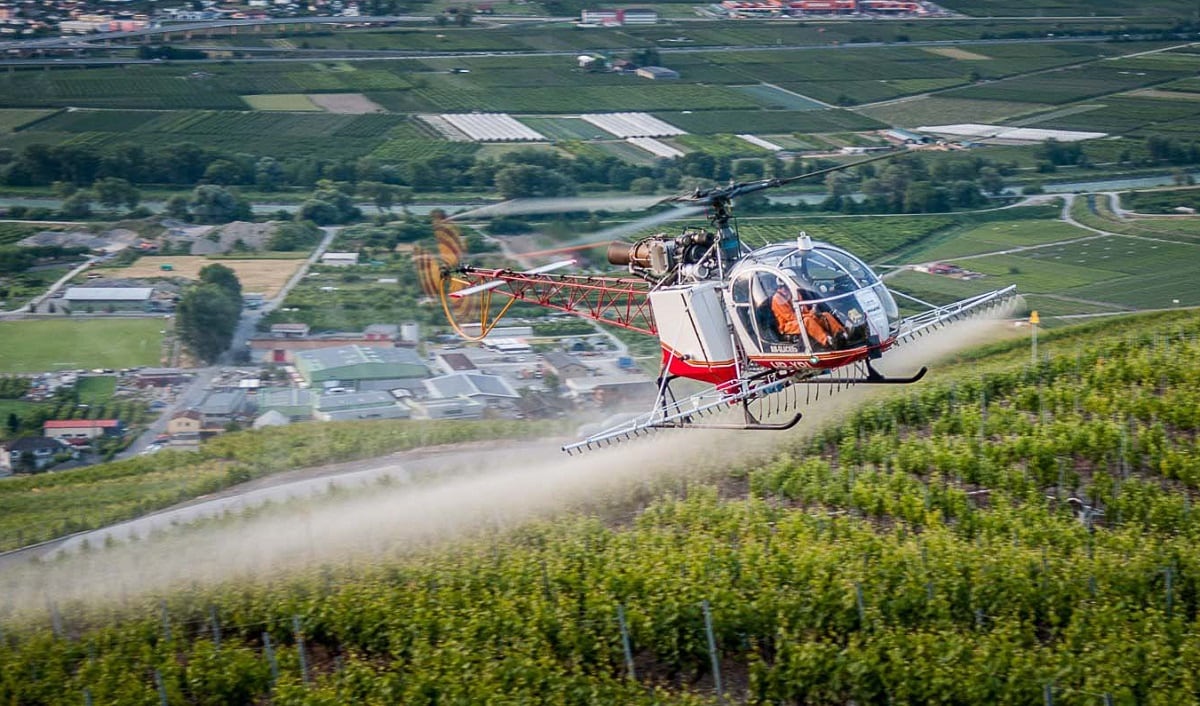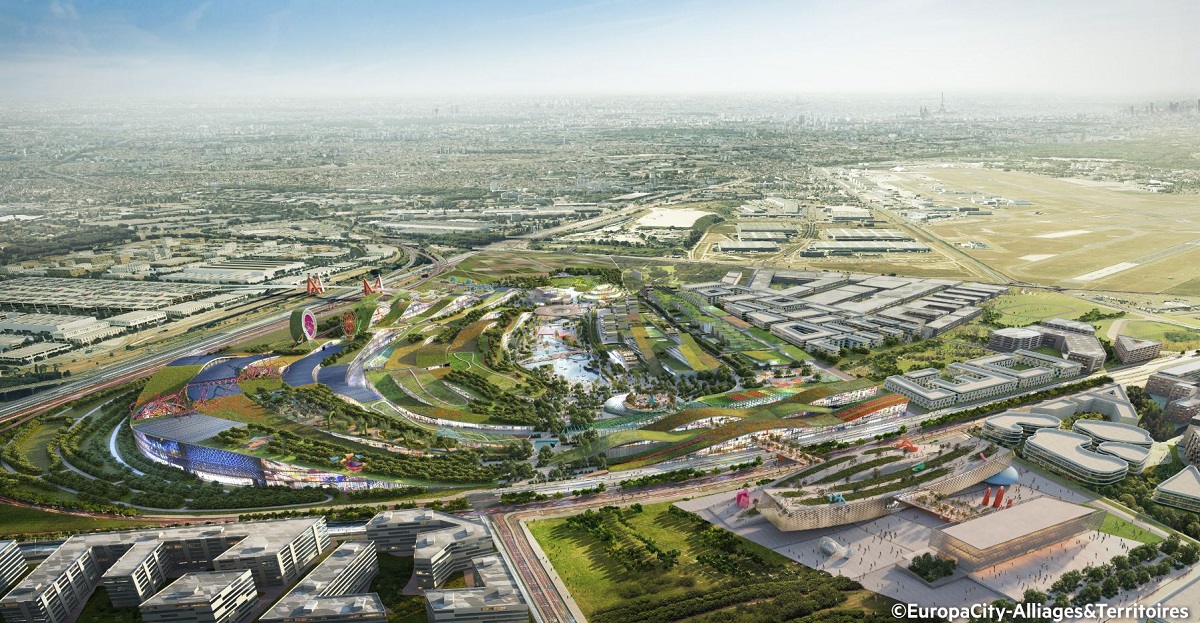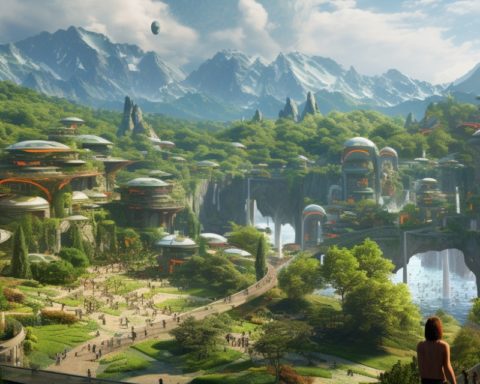Les villes évoluent face aux nouvelles contraintes démographiques, environnementales et sociétales. A quatre jours du second tour des élections municipales françaises, il est urgent d’appréhender les multiples enjeux de transformation de nos lieux de vie. Ceux liés à la digitalisation, à la lutte contre le changement climatique, à la mobilité inclusive, le co-voiturage, les transports collectifs, l’intermodalité, mais aussi le partage de l’espace urbain, les trajets multimodaux, les livraisons, les infrastructures… Bref, à une vie en ville plus harmonieuse. La Smart city ou ville numérique, pourrait être un facteur de transformation des villes mais aussi des campagnes, via le Big data, la blockchain, l’intelligence artificielle. UP’ a interrogé Guillaume VACHER, Manager au sein de l’activité Smart Cities & Territories de Magellan Consulting.
« La nécessité de développer de nouveaux modes de vie aura des conséquences majeures sur la conception des villes » estime François de Mazières, maire de Versailles, ancien président de la Cité de l’architecture et du patrimoine, dans une tribune au Monde. Oui, mais il semblerait que l’avenir des villes numériques – smart cities – soit souvent considéré comme trop « technique », à en croire les intervenants d’un débat en octobre 2019 autour du livre « Gouverner la ville numérique » (1) des chercheurs Patrick le Galès et Antoine Courmont. Il faut que les élus locaux s’emparent du sujet pour que le numérique au service du territoire, qui permet des usages très variés, devienne un vecteur essentiel de l’amélioration de la qualité de vie. Et d’après une étude réalisée par le Syntec numérique, publiée à la fin 2018, 92 % des collectivités de plus de 5 000 habitants auraient déjà lancé une initiative de ville intelligente. Les deux principales ambitions : renforcer le lien avec les citoyens et réduire les coûts.
Pour l’environnement, par exemple, on mesure aujourd’hui la qualité de l’air dans des écoles primaires avec des capteurs IoT (2). Dans le champ de la démocratie participative, des applications sur téléphone permettent aux citoyens de donner leur point de vue sur des aménagements précis. Dans l’intermodalité des moyens de transports, l’usager peut, grâce à une application, faire un trajet sans coupures avec tram, bus, vélo en libre-service, covoiturage, etc. Grace au wifi public, dans certaines petites communes, on accède à la gestion en ligne des cantines, ou encore à l’information municipale et lancer des formalités administratives.
L’usage du numérique n’est pas l’apanage des grandes villes ; il a irrigué tous les territoires qui deviennent de plus en plus connectés. Insuffisamment, certes, quand on parle de fibre optique, … mais les big datas doivent pouvoir se mettre au service des citoyens, des habitants des villes comme à ceux des villages. Être « smart » implique d’être connecté, mais surtout de savoir adapter l’usage des technologies dans le but de répondre aux besoins de la population locale. Il y a donc une interaction systématique et continue entre les besoins de chacun, les consommations et les modes d’habiter de tous les citoyens concernés.
Comment la Smart City peut-elle renforcer l’attractivité et la compétitivité des espaces urbains ?
Guillaume Vacher : L’attractivité est un enjeu majeur pour les villes de demain. En 2050, deux tiers de la population mondiale habiteront dans une ville. Dans un contexte où la mobilité et les outils de l’information réduisent les distances et ouvrent le champ des possibles, les communes mettent en place des stratégies pour valoriser leur tissu économique, leur patrimoine culturel et bien évidemment, pour améliorer la qualité de vie de leurs habitants.
La Smart City s’inclura dans cette démarche et apportera une réponse adaptée à chaque territoire. Plusieurs approches sont possibles. L‘une d’entre elles est la création, par les villes, de sites internet et d’applications visant à mettre en valeur, les acteurs locaux, les commerces, les activités culturelles & sportives et à connecter les habitants en présentant, sur tout type de support, les initiatives locales et la façon d’y participer.
Ces informations, dynamisées par l’open data, seraient alors consultables sur Internet mais aussi pourraient être intégrées à tout véhicule, pour optimiser les déplacements et trouver plus rapidement une place de parking. C’est déjà le cas sur certains modèles de voiture électrique proposant, à son conducteur, un emplacement équipé de borne de rechargement au plus proche de sa destination. Profitant du rechargement, il aura alors tout loisir de s’adonner à ses activités tout en optimisant son temps.
De quelle manière la Smart City permettra-t-elle d’améliorer la consommation énergétique, de promouvoir l’autonomie énergétique et de lutter contre la pollution ?
GV : La ville intelligente de demain sera un maillon essentiel de la production d’énergie verte et certaines villes sont déjà à l’œuvre. La ville d’Amiens souhaite multiplier par dix sa production d’énergie tout en réduisant de plus de 60% sa consommation pour atteindre « l’autonomie énergétique » d’ici 2050. Pour cela, la capitale de la Picardie travaille sur l’efficacité énergétique en injectant l’électricité renouvelable produite par les bâtiments tout en travaillant à leur rénovation. Le pilotage des opérations permise par le déploiement de capteurs intelligents permet d’obtenir, en temps réel, les informations nécessaires à l’équilibrage entre le réseau de distribution et la consommation des habitants. L’énergie ainsi produite à partir de sources naturelles, à l’aide de panneaux solaires par exemple, permettra de réduire la facture énergétique globale et aura un impact carbone positif.
Une énergie produite en ville, par la ville pour ses habitants pourra permettre, d’autre part, de développer les réseaux d’infrastructure de recharge des véhicules électriques, plus communément appelés IRVE proposant une mobilité à faible émission carbone. C’est l’objectif de l’ADEME, l’agence de l’environnement et de la maîtrise de l’énergie, qui a retenu, en fin 2019, treize projets d’infrastructure de recharges alimentées en énergies renouvelables et peu impactante pour le réseau électrique local.
Comment la Smart City agit-elle sur l’environnement ? Comment la Smart City permet-elle de façonner le monde de demain, plus propre, plus vert, plus efficient ?
GV : La ville de demain prendra en compte l’environnement notamment par l’amélioration de la qualité de l’air, l’optimisation de la consommation des ressources et un meilleur traitement des déchets. L’atteinte de ces objectifs auront pour accélérateur l’utilisation et la maîtrise de la donnée issue des différents services et acteurs des villes. Le défi majeur sera alors de dé-siloter les activités afin de capitaliser sur les informations de chacun pour prendre les décisions adéquates sur le terrain.
La gestion des déchets est un aspect fondamental de la Smart City. Il conviendra d’agir sur le tri, la collecte et le recyclage pour assurer la réussite des projets. L’éco-quartier Clichy-Batignolles, par exemple, a mis en place un réseau pneumatique souterrain permettant de relier les bornes de dépôt au centre de tri le plus proche. L’apport de valeur se réalise alors sur la diminution des rejets carbones en optimisant les trajets des camions de collecte, toujours nécessaires pour les encombrants et les surplus.
Un autre exemple, des capteurs de qualité de l’air ont été installés à Grenoble. Lorsqu’ils détectent une forte densité de particule fine, les autorités prennent pour décision de réduire la vitesse de circulation par l’apparition d’un message sur les panneaux routiers. Pour compléter cette action, une information aux habitants est envoyée sur tous les supports afin de limiter leurs déplacements, leurs activités sportives et les inciter à utiliser les transports en commun ou des modes de transports alternatifs.
Quels sont aujourd’hui les nouveaux moyens de mobilité et de mobilité partagée ? Comment la Smart City optimisera-t-elle les flux et la mobilité en 2050 ?
GV : Aussi antinomique ce que cela puisse paraître, le téléphone portable devient aujourd’hui notre assistant de mobilité personnel. Dès aujourd’hui, les usagers des villes peuvent utiliser des applications qui fournissent des services de calcul d’itinéraire intégrant de multiples moyens de transport. Ces applications utilisent les données partagée et l’Open Data pour augmenter l’expérience de leurs utilisateurs et ainsi faciliter leurs déplacements.
L’optimisation des flux de mobilité est une des clés de la ville de demain. Selon l’institut IFOP, un tiers des automobilistes urbains seraient prêt à renoncer à leur véhicule personnel au profit des offres de mobilités partagées. La ville de Paris l’a bien compris en mettant à disposition du public des voitures, des scooters et vélos entre autres. Des véhicules variés pour chaque type de trajet.
Demain, les infrastructures de la ville offriront certainement d’autres types de mobilité. Avec l’arrivée du pilotage « automatique » des véhicules, l’avenir du conducteur sera d’être… un passager. Les données de la ville seront alors consommées par les véhicules, optimisant le temps de transport. L’avènement du véhicule autonome à propulsion bas carbone… la mobilité de demain sera résolument différente.
La Smart City est-elle compatible avec le respect de la vie privée des citoyens ? Est-ce qu’elle peut garantir la sécurité des individus ?
GV : Pour s’adapter à ses habitants et conserver son attractivité la ville de demain continuera à essayer de les comprendre. Les capteurs terrains, caméras et autres, seront les points d’entrée de l’information nécessaire à l’analyse des usages et des espaces.
La notion de vie privée est essentielle. Les citoyens et les autorités y sont vigilants. En 2019, devant la polémique suscitée par l’installation de détecteurs sonores, la ville de Saint-Etienne a finalement repoussé leur mise en place. A noter que la CNIL, en France, est très présente quant à la protection de la vie privée dans l’utilisation des capteurs urbains et reste une autorité de contrôle garante de ce principe.
L’exploitation des données est une question prépondérante. Dernièrement la ville de Toronto n’a pas souhaité poursuivre le programme Quayside consistant à la réhabilitation d’une zone industrielle par une filiale de Google. Les critiques des associations d’usagers liées à l’utilisation massive des caméras, à l’absence de consentement et d’information des citoyens ciblés auront eu raison du projet.
L’attractivité d’un territoire dépend donc de l’acceptation de ses usages smart. La protection de la vie privée en est la clé. Aussi le programme Européen H2020 incluant des appels à projets Smart City impose la prise en compte des notions d’éthique pour chaque réponse. Il s’agira alors de composer des projets garantissant des approches mesurées pour répondre aux problématiques des villes. Connaissant les différents enjeux des territoires et les attentes de leurs habitants, le défi sera alors de proposer une transition progressive et inclusive par l’usage de la donnée afin de mettre en place une politique durable, efficace et acceptée de tous.
Entretien avec Guillaume VACHER, Manager au sein de l’activité Smart Cities & Territories de Magellan Consulting
(1) « Gouverner la ville numérique » de Patrick Le Galès et Antoine Courmont – Editions PUF/Vie des idées
(2) Le dernier rapport publié par 451 Research révèle la présence de 8 milliards d’objets connectés dans le monde en 2019. Leur nombre devrait atteindre un total de 13,8 milliards en 2024












